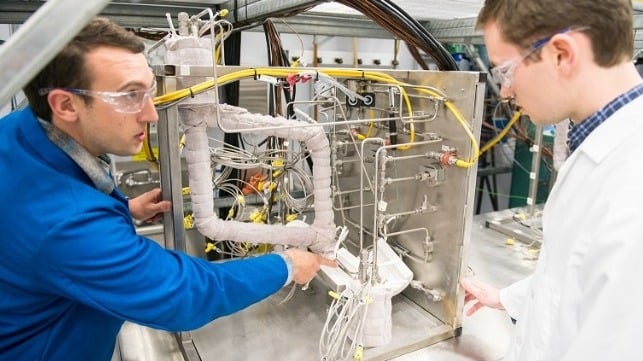Why Nuclear Propulsion Has a Head Start in Shipping Decarbonization

COP 26 has helped revitalize the debate on nuclear energy. It helped highlight a rising acknowledgement that the path to decarbonization may be shaped by nuclear power. At the event, the US Special Presidential Envoy for Climate, John Kerry, hinted that deployment of nuclear energy presents a significant opportunity for achieving the net zero emissions global target by 2050.
Unfortunately, the event organizers rejected all applications by the World Nuclear Association’s members to exhibit at the Summit’s Civil Society “Green Zone.”
The bad reputation of nuclear power after tragic accidents at Chernobyl and Fukushima continues to trigger aversion. However, these past failures have also helped to spur new high-tech innovations in nuclear power production.
As an example, the Bill Gates-backed Terrapower Company has recently chosen a site to locate its first reactor in U.S. The demonstration-scale plant will involve an advanced molten salt reactor that needs minimal refueling. The design significantly reduces complexity and operational risk.
In addition, recent breakthroughs in the study of small modular nuclear reactors offer a huge leap in enabling adoption of nuclear propulsion in shipping. Two factors cement its proposition for shipping decarbonization.
First, nuclear power can be used for the production of green hydrogen and ammonia fuels, the two most preferred clean shipping fuels. Second, as multiple companies get licenses to scale development of small nuclear reactors, nuclear energy may become the main source of ships’ onboard propulsive power.
Last week, the announcement by Southern Co., an American utility company, of its plans to build a small, experimental nuclear reactor in Idaho, helped turn a new page in the development of Generation IV nuclear reactors.
The project is one phase of a comprehensive, multiyear research project by the US Department of Energy on molten chloride fast reactors (MCFR). It will help provide data to support DOE’s programs in scaling MCFR infrastructure countrywide. Terrapower is the technical contractor for the project.
A molten chloride fast reactor uses liquid salts as both coolant and fuel. It is also able to get more energy out of its primary fuel, so it can run more efficiently.
A handful of navies use nuclear propelled warships and submarines, although their reactors are cooled by high-pressure water. They also use weapons-grade uranium as a fuel.
With the new MCFR designs, the reactor can operate free of high-pressure water and uses non-weapons grade uranium fuel mixed into a chloride salt. In case of a reactor leak, the mixture readily cools and solidifies. This new development is what makes MCFR suitable for civilian ship propulsion, thanks to its higher inherent safety.
In terms of costs, two factors give SMRs (Small Modular Reactors) a head start in adoption by heavy industries, such as shipping. The rising government spending in nuclear R&D since 2015 has started to spur a new wave of cheap nuclear technologies with commercial prospects. In the US, the bipartisan infrastructure bill passed by the House of Representatives allocates more than $8.47 billion as a subsidy for existing nuclear plants and advanced nuclear demonstration projects.
China is putting considerable effort into similar technology. Since the launch of its molten salt-reactor program in 2011, China has invested over $500 million
China’s expanding interest in nuclear power is a major boost to the commercial applications of SMR technologies. Four months ago, China started the construction of its first commercial onshore SMR nuclear project, “Linglong One.” It was the first SMR to be approved by the International Atomic Energy Agency back in 2016.
As the 77th session of IMO’s MEPC (Marine Environment Protection Committee) kicks off this week, it could use the moment to initiate a debate on nuclear power propulsion - specifically what it could mean for the maritime’s industry target to decarbonize by 2050.
IMO already has existing legislation on nuclear powered ships. Chapter VIII of the International Convention for the Safety of Life at Sea 1974 provides for the basic requirements needed in operating a nuclear powered ship, particularly concerning radiation hazards. This is codified in the comprehensive Code of Safety for Nuclear Merchant Ships, adopted by IMO in 1981.
The opinions expressed herein are the author's and not necessarily those of The Maritime Executive.
